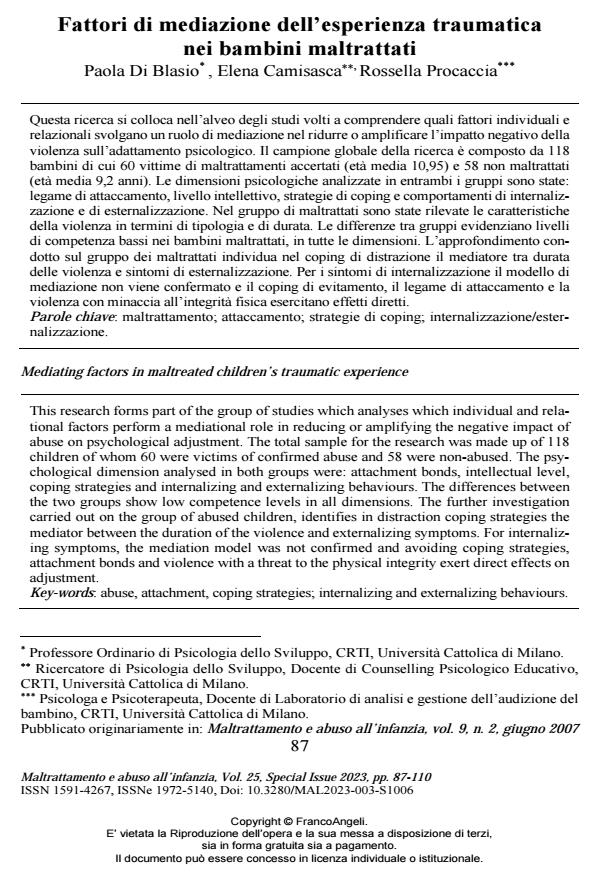Mediating factors in maltreated children’s traumatic experience
Journal title MALTRATTAMENTO E ABUSO ALL’INFANZIA
Author/s Paola Di Blasio, Elena Camisasca, Rossella Procaccia
Publishing Year 2024 Issue 2023/3 Suppl.
Language Italian Pages 24 P. 87-110 File size 244 KB
DOI 10.3280/MAL2023-003-S1006
DOI is like a bar code for intellectual property: to have more infomation
click here
Below, you can see the article first page
If you want to buy this article in PDF format, you can do it, following the instructions to buy download credits

FrancoAngeli is member of Publishers International Linking Association, Inc (PILA), a not-for-profit association which run the CrossRef service enabling links to and from online scholarly content.
This research forms part of the group of studies which analyses which individual and rela-tional factors perform a mediational role in reducing or amplifying the negative impact of abuse on psychological adjustment. The total sample for the research was made up of 118 children of whom 60 were victims of confirmed abuse and 58 were non-abused. The psy-chological dimension analysed in both groups were: attachment bonds, intellectual level, coping strategies and internalizing and externalizing behaviours. The differences between the two groups show low competence levels in all dimensions. The further investigation carried out on the group of abused children, identifies in distraction coping strategies the mediator between the duration of the violence and externalizing symptoms. For internaliz-ing symptoms, the mediation model was not confirmed and avoiding coping strategies, at-tachment bonds and violence with a threat to the physical integrity exert direct effects on adjustment.
Keywords: abuse, attachment, coping strategies; internalizing and externalizing behaviours.
Paola Di Blasio, Elena Camisasca, Rossella Procaccia, Fattori di mediazione dell’esperienza traumatica nei bambini maltrattati in "MALTRATTAMENTO E ABUSO ALL’INFANZIA" 3 Suppl./2023, pp 87-110, DOI: 10.3280/MAL2023-003-S1006